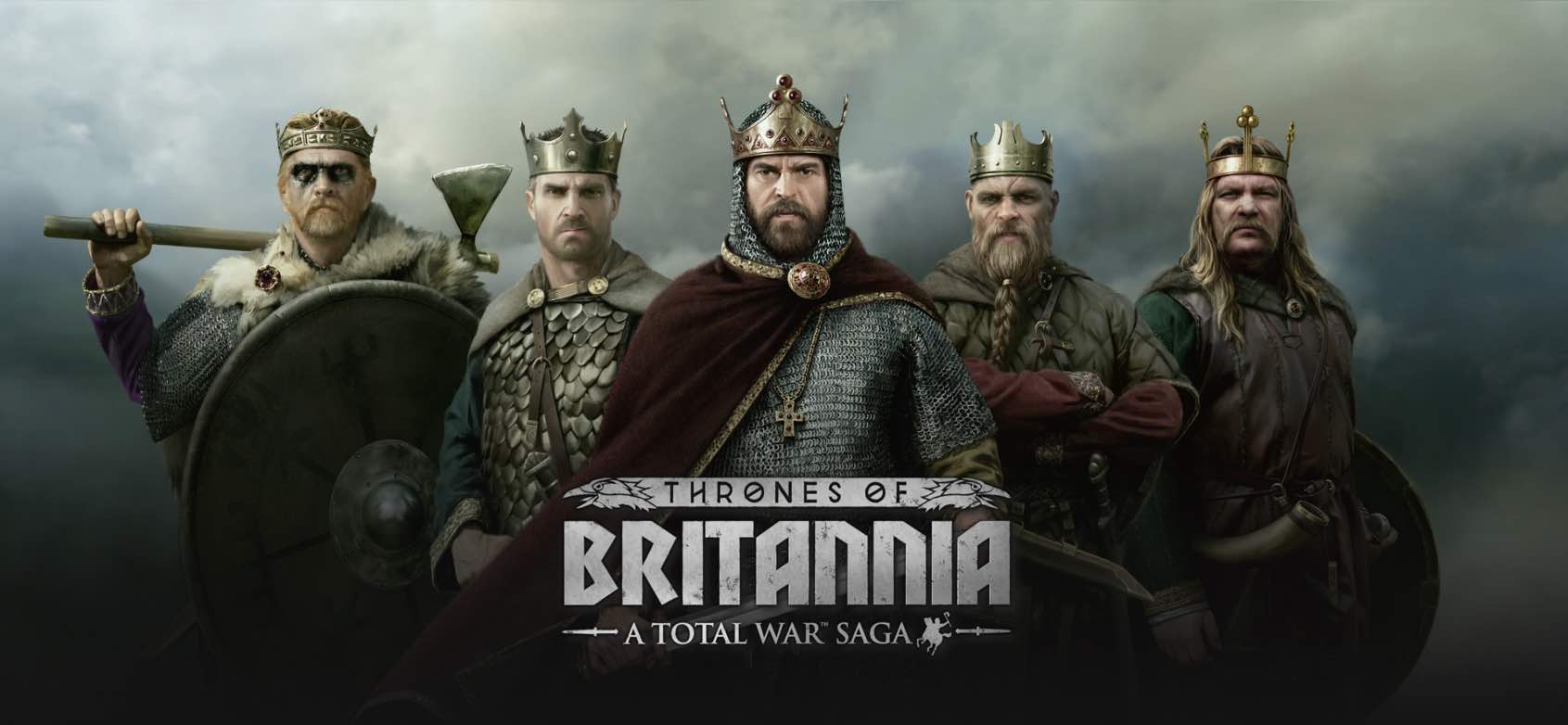We are proud to have been part of the international composing team on Total War Saga: Thrones Of Britannia, creating around
1/3 of the in-game soundtrack.

What should music be like for a strategy game set in the British Isles of the 9th century? Audio director Richard Beddow and audio designer Jack Melham knew they wanted to have a score that should be epic and large enough to embody a full-scale war. Orchestral but coloured with period instruments’ melodies and ideas depicting a medieval Britain shaped by the Dark Ages and Vikings.
“Creating the score for Total War Saga: Thrones Of Britannia required delivering on a concept that captured the drama and atmosphere of the Dark Ages, fusing ancient English, Highland, Celtic and Nordic elements to create the Medieval setting.
To that end, we assembled an international team of music producers, musicians, crew and processes to deliver the soundtrack and were very happy with the results and with Dynamdions collaboration as part of that team and in helping us craft a great score. They were professional to work with, able to understand our focus, and respond to our feedback” – Richard Beddow (Audio Director)
Working with Creative Assembly to understand their vision and direction, shaping the tone of the Medieval world within the game and under the ever gently guiding hands of Tilman Sillescu, Dynamedion’s Creative Director, the composers Alex Röder, Nicolai Patricio and Henning Nugel went to work last autumn knowing little of what varied − at times − crazy stuff they would end up with by January this year. Let’s hear it from themselves:
Alex Röder

“We all soon found that a lot of modern orchestral devices would not work for this setting. As we wanted to create a very gritty and rustic atmosphere we dropped the bright trumpets from the start and also cut the shimmering trombones’ sound so often heard in today’s scores. In the end we only left some brass for the epic battle and skirmish tracks but killed most of the brass for the more detailed and closer feeling situations like pre-battle, threat and at-war campaign tracks.
With Henning being more of a violin-guy, I am more into flutes, using them to play live quite often in this project to give the music some raw and medieval flavour. I used a low whistle which can be played very expressively and threw in some effects like overblowing and rolling the tone like a “rrrr” to create this rawness we were after.
I mostly created threatening moods, so my challenge was to sound medieval but still dark and foreboding and not like your normal tavern tune. I also used some gritty-sounding string instruments which were carefully chosen samples to stay on medieval ground and not sound too polished and modern.
My first demo music
starts off with some battle mood just to switch into tension. I used a medieval monks’ choir to set the dark mood and some rusty strings here and there.
The second demo
starts by setting a sacred mood using choir and flutes and leads into some minor action cue using the same instrumentation. Then it delves into a dark tension mood featuring some low flutes and a sad cello concluding with an evolving action theme with dissonant choirs and penetrating ethnic string instruments.”
Nicolai Patricio

“Creating a sound that is appropriate, both for the setting and scope of the game, proved to be quite a challenge. We found out that many modern harmonic progressions would not fit, and also there needed to be a focus on solo instruments, supported by the epic sound of the orchestra. We ended up doing a lot of iterations until we were sure that the music felt right for Thrones Of Britannia.
I had the chance to write a couple of marching tracks that you can hear right in the beginning of the my track.
To create an ominous marching feel I started with a basic rhythm on low drums and fleshed out the core idea from there. The drums consist mainly of taikos, which are Japanese percussion instruments, but since they have a lot of body and a very “wooden” quality to their sound, it felt appropriate for the setting of the game and purpose of these tracks. With some staccato strings I added more rhythmic energy to the music while the low brass motifs made it more powerful and aggressive. In the second half you can hear a choir rising to a climax that gives a strong sense of impending battle.
The third part of the track starting at 1:36 minutes plays on the world map when the game is in a state of war. It starts off with a bass drone and a slow drum beat to portray the preparations for battle and the “quiet before the storm”. A cello motif and some violin tremolos rise to add a feeling of danger. Then you can hear a sad and pensive melody played on a medieval lute, which is a string instrument that resembles the classical guitar that we are more accustomed to nowadays. This melody is harmonized with perfect 4ths and 5ths, which are harmonic intervals very typical for medieval choir music. Then the track slowly grows with strings and choir accompanied by the drum beat. In this section, you can also hear a couple of Nyckelharpas harmonizing at 2:58. They are traditional Swedish bowed string instruments with a very rich and rustic texture and therefore well-suited for the game.”
Henning Nugel

“Like Alex and Nicolai I did quite some tracks for the regular in-game music. But I also got the chance to score all the faction intros and about all the endings. So I really could get creative on how to differentiate the varied peoples inhabiting Britain at the end of the 9th century.
Apart from the orchestral colors my palette for Britannia consisted of some special instruments. For one I used my violin extensively which I tuned down a complete fourth on all strings, so I got to the D instead of G on the lowest string. This gave it a really dark and rustic feel, kind of like a vielle. I also often played an Irish flute for its dark and breathy timbre.
For the christianized Anglos-Saxons I used some liturgic monks’ chants as colours here and there but most of all the violin was played in a more reserved, orderly manner albeit still earthy. Instead the Vikings got scratchier violin sounds and effects and scrappy metallic sounding percussions. I also used an old totally mistuned tin whistle (I dubbed it the “rust whistle”) and played an Irish cittern for additional grittyness.
You can hear the differences in this mix I created for this blog.
It starts off with a Viking tune leading into an Anglo-Saxon one. This is followed by an Irish-Scottish piece with whistles and pipes and closes with a dark tune for the northern Welsh with some yearning female vocals (wonderful Conny Kollet – also of the Dynamedion team).
The second track I cut together features the Vikings again but also some Anglo-Saxons with the afore-mentioned monks’ choir. There’s also a part where I played some low whistle, which is quite a modern instrument and mostly associated with Irish folk music. But I really like the sad and yearning quality of the instrument which made me choose this for the western Welsh.
There’s a last track where I featured some of the more uplifting music I composed for the various success movies. It also features the few recorder/Irish flute duos I composed and played for the game.”
Are you also interested in music composition? Check out our services and tell us more about your project!
